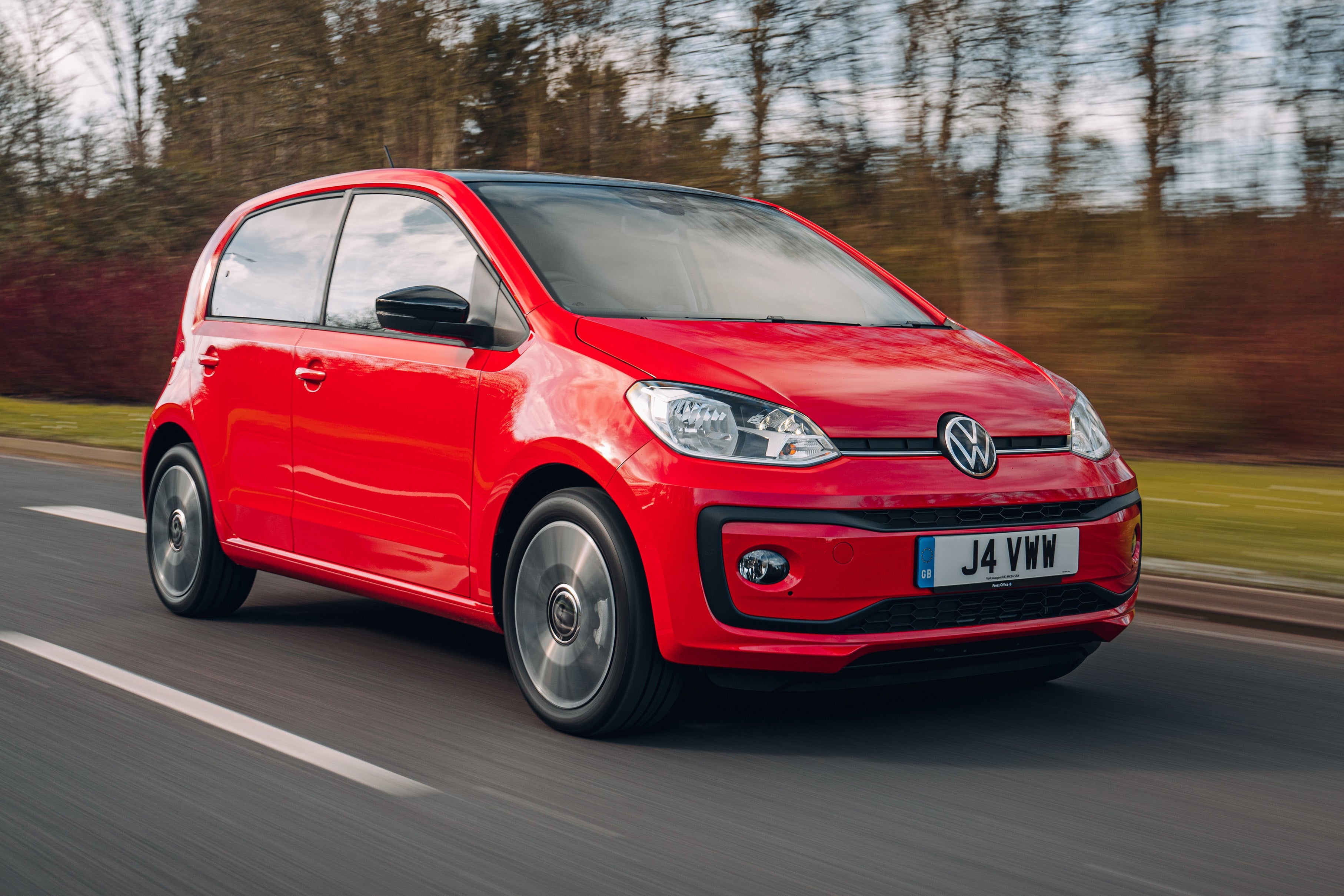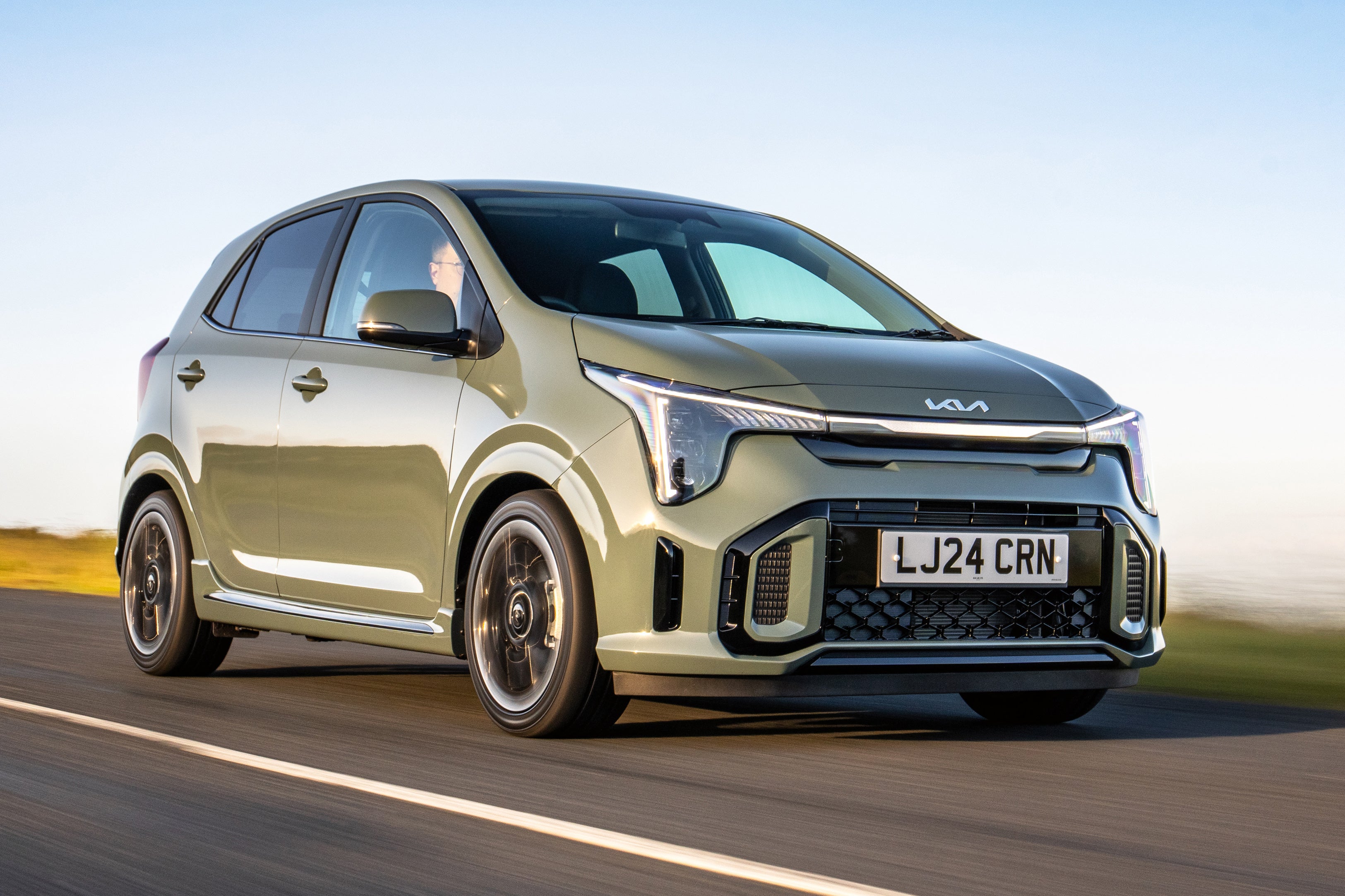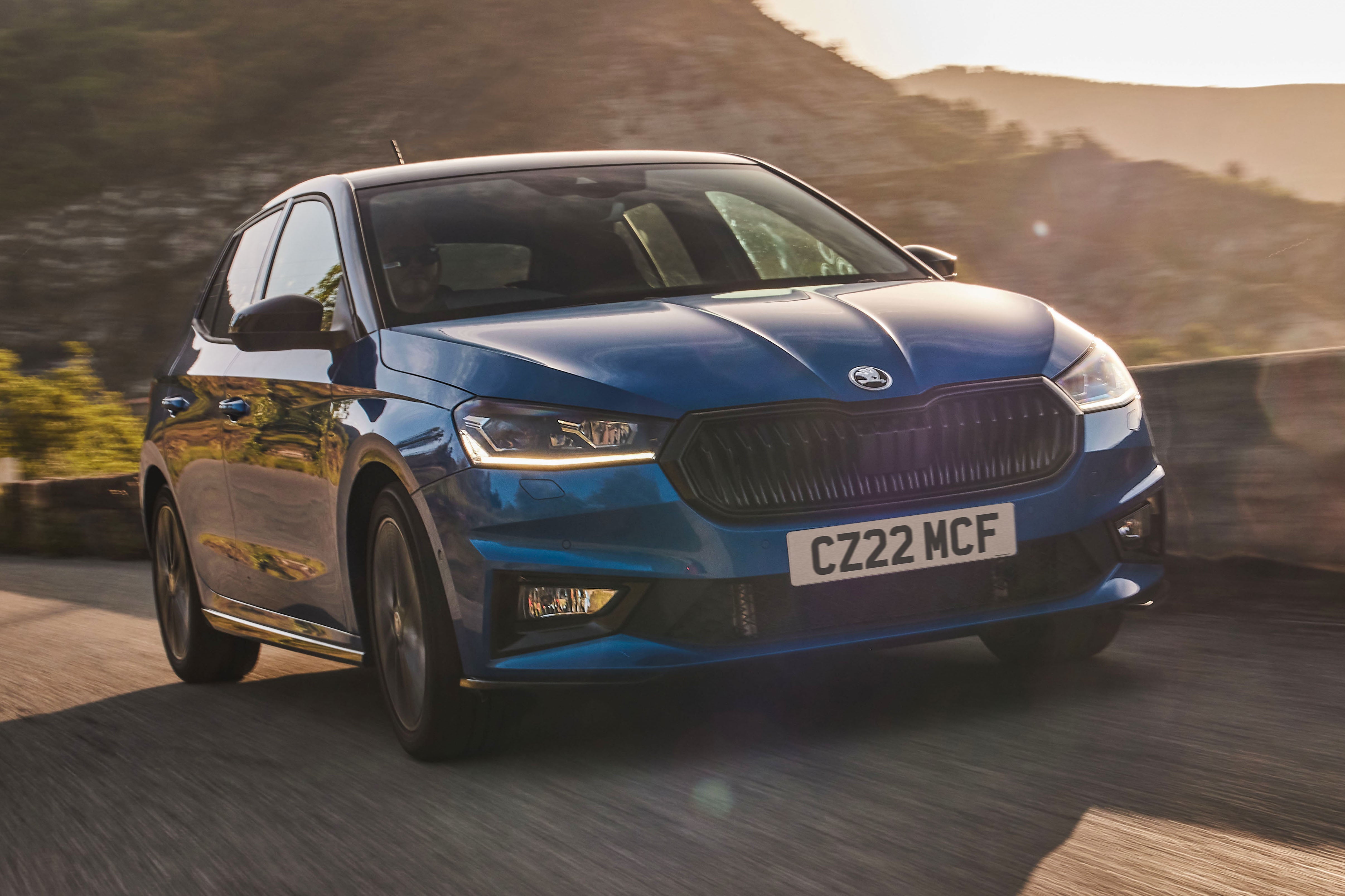
The practical driving test is a daunting task, but with careful preparation and practice, passing your driving test can be straightforward. We help you through the process of how to book and pass a driving test.
The driving test. It's something of a big deal. Not only does it mark the culmination of many hours of tuition but it's also your opportunity to bin those L-plates for good and earn the freedom of the road by getting a full driving licence.
Driving test anxiety is something that's to be expected. And everyone feels nervous ahead of the practical driving test, but remember that your instructor wouldn’t have put you forward for the big day if they weren’t 100% confident that they are ready to pass the test.
How to book a driving test
You must be 17 years of age or older to book the practical driving test. You must also hold a valid provisional driving licence and have already passed the theory test. The certificate you receive when passing the theory test is valid for up to two years and you can book your practical car test at any time during this period of time.
Booking the practical car driving test is easy. You can book with the Driver and Vehicle Standards Agency (DVSA) online or over the phone, but you will need to declare if you are booking a driving test for a car with a manual or automatic gearbox (as there are different licences for each type of vehicle).
How to book your driving test online
Booking online is the quickest and easiest way to get your car driving test. You can book your driving test in England, Scotland and Wales up to 24 weeks in advance and the service - at www.gov.uk/book-driving-test. The service is available every day, from 6am to 11:40pm.
To book, you'll need your provisional driving licence number, credit or debit card and the reference number of your driving instructor (if you want to check they’re available).
If the online booking service is busy you may be put in a digital queue, but the driving test booking system will tell you how long you’ll need to wait.
How to book your driving test over the phone
You can book your car driving test over the phone by calling 0300 200 1122. The DVSA telephone driving licence booking service is open Monday to Friday, 8am to 4pm. As with the online process, you'll need your driving licence number, credit or debit card (for payment) and the reference number of your driving instructor (if you want to check they’re available).
Can I use my own car for the practical driving test?
Yes, you can use your own car for the driving test. But it must be taxed, MOT’d (if the vehicle is older than three years of age) and insured. Take note, not all insurance policies will allow you to use your car for the driving test, so check with your insurer beforehand.
Your car must have an extra interior rear-view mirror for the examiner, L-plates on the front and rear. The front seat must also have a head restraint and be tidy - the examiner can refuse the driving test if the car is dirty or smells of cigarette smoke.
Some vehicles are not permitted to be used for the driving test. The MINI convertible and Volkswagen Beetle convertible are not permitted due to the fact they do not give the examiner all-round vision. The same is true for the Toyota IQ and Smart Fortwo.
If in doubt, you can check that your car is permitted for use in the practical driving test with the DVSA by email - customerservices@dvsa.gov.uk - or telephone at 0300 200 1122.
Check out our guide to the best cars for new drivers if you're looking for your first set of wheels.

How much is a driving test?
The practical car driving test in England, Scotland and Wales costs £62 if you take it Monday to Friday or £75 on evenings, weekends and bank holidays.
Remember, you need to take the theory driving test before you can book your practical test. The theory test is charged at a flat rate of £23.
Drivers who have been disqualified will need to take an extended practical driving test, which costs £124 on weekdays and £150 on evenings, weekends and bank holidays.
Not all driving test centres offer evening, weekend and bank holiday appointments. Any driving test that takes place after 4.30pm is automatically charged at the higher evening rate.
How long does a driving test take?
The practical car driving test will take around 40 minutes. Before you start driving you will be asked to read a number plate from 20 metres as part of the eyesight test - you will automatically fail if you are unable to do this correctly.
What are the 'Show me, tell me questions?
You will be asked by the driving test examiner to demonstrate your safety knowledge with two ‘show me, tell me’ questions.
The ‘tell me’ question is asked before you start driving. You will be required to explain how you would carry out an important safety task. For example, the examiner may ask, “can you open the bonnet and tell me how you’d check that the engine has sufficient engine coolant?”
The ‘show me’ question will be asked during the practical driving test and the examiner will ask you to show how you would carry out an important safety task. For example, the examiner may ask, “when it’s safe to do so, can you show me how you’d switch on your dipped headlights?”.
What does the practical driving test consist of?
Driving test routes are not published but it will include local roads and possibly a dual carriageway. It will not include any motorways.
The driving test examiner should give you clear verbal directions that you need to follow. As part of the examination, you may be asked to perform an emergency stop, a hill start and to stop at the side of the road before pulling away again. You may also be asked to pull out from behind a parked vehicle, too.
The examiner will also ask you to demonstrate your ability to reverse the car in a safe and controlled manner. This will include one of the following exercises:
- Parallel park at the side of the road
- Parking in a specified bay - either by driving in and reversing out, or reversing in and driving out
- Stopping at the right-hand side of the road and reversing for two car lengths
What happens during the independent driving part of the driving test?
You will be asked to demonstrate your ability to drive independently during the practical driving test, without any guidance from the examiner. This part of the test lasts for 20 minutes and you'll need to follow directions from a sat nav or traffic road signs (your test driving examiner will tell you which).
The examiner will provide the sat nav and set it up for you (you can't use your own sat nav device during the driving test).

How do I pass the driving test?
You will pass the driving test if you make no more than 15 minor faults. A minor fault could be undue hesitation when pulling out of a junction or getting one of the ‘show me, tell me’ questions wrong.
If the examiner believes you've made a serious or potentially dangerous mistake then you will automatically fail the practical driving test. A dangerous mistake will be an event that the examiner feels has put yourself or other road users at risk.
If you pass, the examiner will tell you what minor faults you have made before giving you the pass certificate. You will be asked if you want your full licence to be sent automatically and be asked to hand over your provisional licence so it can be processed.
You can then start driving on your own straight away after passing the test, you do not need to wait for your full licence to arrive before you can start doing this.
I've failed the practical driving test, what should I do?
Each year there are around 440,000 practical driving tests in the UK but only half of those test result in a pass. If you are one of the unlucky 50% then do not be too disheartened. Your driving test examiner will explain where you went wrong and email you a copy of their report. They may also give you some advice on how you can improve your driving for the next test.
Failing the practical driving test will forfeit your fee and you will need to book a new test and pay for it online or over the phone. You'll need to book a new date that is at least 10 days after the old test, although your driving tutor may encourage you to take some time to work on the areas where you have struggled.
If you feel you failed the driving test unfairly then you can appeal the result with the DVSA. The result will not be changed, but you may get a refund or a free retest if you feel the examiner did not follow the correct procedures or rules.

Top tips and advice for passing the practical driving test
- Read the highway code: It’s packed with useful and important information that’ll give you an immediate head start on your journey to becoming a brilliant and safe driver.
- Pay for professional lessons: Driving instructors are trained to a high standard in the UK and they will ensure you are fully prepared for your practical driving test. There are lots of national driving schools in the UK, plus lots of excellent independent tutors.
- Don’t rush: The time it takes to learn to drive will vary from person to person. Do not pressure yourself to rush into the practical driving test. Instead, take your time and book your appointment when you feel you are 100% ready.
- Learn the driving test route: The practical driving test route isn’t available to the public or published online. But your driving instructor should have a good idea of the roads it will cover. Ask them to include these routes in your lessons.
- Take a mock test: Most driving instructors will be happy to conduct a mock driving test ahead of the real thing. So make sure you get a couple of test runs under your belt before you take your practical driving test.
- Don’t get distracted: Your driving examiner will record your driving performance on a tablet PC or paper mark sheet. Do not attempt to look at your results when driving on your test, as it will distract you from the road and could result in a serious fault.

Ten reasons why people fail the driving test in the UK
- Failure to make effective observations at junctions: The number one cause of driving test failure in the UK comes from a failure to scrutinise the road ahead. According to the DVSA, junctions provide the biggest obstacle for learners — with most scoring an immediate fail because they’ve failed to check their surroundings for pedestrians, cyclists and other vehicles — i.e. not giving way to traffic on a dual carriageway from a slip road or forcing another car to slow significantly by not judging their speed properly.
- Not using mirrors correctly when changing direction: The rear-view and door-mounted mirrors are vital to everyday safety on the road. Not only will they let you know who’s behind you, but they will also warn you of any motorbikes or cyclists that might be in your blind spot. However, a quick glance won't gain any points with the examiner. Always take time to look carefully before changing direction as failure to do so will result in an instant fail. Remember: mirror, signal, manoeuvre.
- Not having full control of the steering wheel: It might sound a bit obvious, but you need to show you can control the car effectively without letting bad habits creep in. Common mistakes include driving with one hand on the wheel (when not changing gear), turning too late/early and allowing the wheel to spin through your hands. All will score you a red mark from the examiner.
- Incorrect positioning when turning right at junctions: Learners who veer from one side to another will get marked down, along with those who choose the wrong lane when approaching a roundabout or junction. For example, when you reach the end of a wide road with no road markings, you position in the left of your lane when you’re actually turning right.
- Not moving off safely: To pass your test, you must be able to move off safely while making the correct observations from the side of the road, on a slope or hill and from behind a parked vehicle. Failing to check mirrors and blind spots will usually give an instant fail, as will pulling out in front of approaching traffic.
- Not responding appropriately to traffic lights: Driving obviously requires understanding and obeying traffic lights, yet thousands of pupils fail the test for ignoring or misreading them. But this doesn't just mean barreling through a red light. Pupils can lose marks here for stopping after the first white line when there are advanced stop lines for cyclists, as well as moving forward on a green light even though the junction isn't clear. This then means you’re then blocking the junction when the traffic lights change.
- Poor positioning on the road during normal driving: You'll fail if, throughout the test, you repeatedly drive too close to either the kerb (putting pedestrians at risk) or the centre of road (putting oncoming drivers at risk). Unnecessarily driving in the right-hand lane of a dual carriageway will also put you in the examiner's bad books.
- Not responding correctly to traffic signs: Common instances of failure to respond adequately to road signs include ignoring a stop or no entry sign, driving in a bus lane when a sign shows that you cannot use it at that time and not reacting quickly enough (or at all) to speed limit changes.
- Not having full control of the vehicle when moving off: A lack of control when moving off would be demonstrated by a learner who stalls repeatedly throughout the test, stalling the car and rolling back a considerable distance when attempting a hill start and trying to move off without selecting a gear — which causes the car to roll back a considerable distance.
- Not keeping sufficient control of the vehicle during reverse parking: We'd argue that the reverse/parallel park is one of the most feared demands on the driving test. The task requires a pupil to back their vehicle into a marked bay or behind a parked car on the side of the road. As well as showing high levels of awareness of other road users, the learner must show complete control and accuracy of the vehicle to ensure it fits squarely into the parking space. Reasons for failures include either the front or back wheels (or both) on the passenger side ending up on the pavement, too much repositioning and your final parking position being outside of the lines of the bay.
More car buying and owning guides
Everything you need to know about buying and owning a car from our experts




